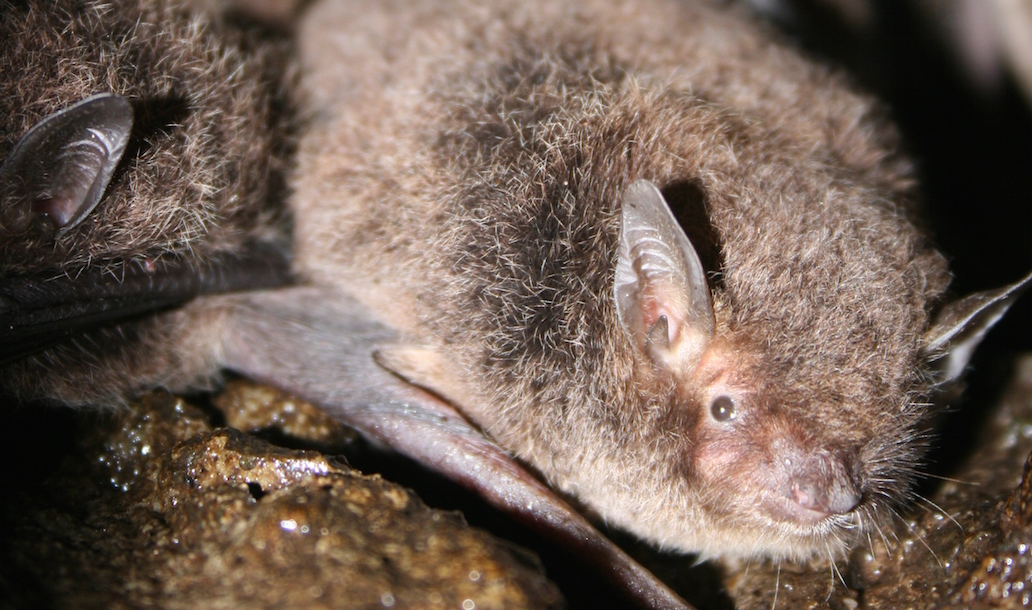Contributed by Joy Window, Member, Big Scrub Landcare
What has large, hairy feet and lurks in the rainforest? No, not a yowie, but the southern myotis (Myotis macropus, aka the large-footed myotis or fishing bat). This bat has big feet for its size – while its wingspan may be 28 cm, its feet may be over 8 cm long. At night, it glides over the surface of rivers and streams, dragging its toes through the water and snatching small fish that are near the surface with its long, curved claws. It is the only Australian bat that is known to eat fish.
The southern myotis echolocates for aquatic insects, for insects flying just above the water surface (moths, beetles, flies, crickets, cockroaches, water-boatmen), and for ripples made by small fish and tadpoles just under the surface. Some insects can detect the echolocation and make an escape. The bat’s flight membrane reaches to the end of its long tail, acting as a rudder and also forming a ‘basket’ for storing prey that is flipped into it by the claws – the tail tip curls over to close the ‘basket’. After flipping prey into the ‘basket’, the bat can continue to fly around, munching its lunch from the ‘basket’. The highest number of teeth in Australian bats is found in this species – 38.
Radio-tracking has shown that these bats may fly up to 15 km from a roost to feed at a lake – a big effort for a 12-gram animal.
In the rainforest, these bats roost in caves or tree hollows, as long as they are near water. Breeding colonies involve one dominant male and up to 12 females, but colonies of several hundred have been found. Other males roost alone or in small, all-male groups. In southern Queensland and northern New South Wales, two young may be born a year, in October and January. Mothers feed the babies with milk for about eight weeks, and the young stay with the mother for another three or four weeks.
In the rainforest, this bat is eaten by owls (like the barking, sooty, masked and powerful owls that are also threatened species in Big Scrub remnants) and pythons. The fur ranges from dark grey to reddish brown, providing good camouflage at night. Pythons may take bats from their roosts inside a cave or wait at a constricted entrance for the bats to emerge and strike as they fly past.
It’s yet another fascinating animal in our Big Scrub.


